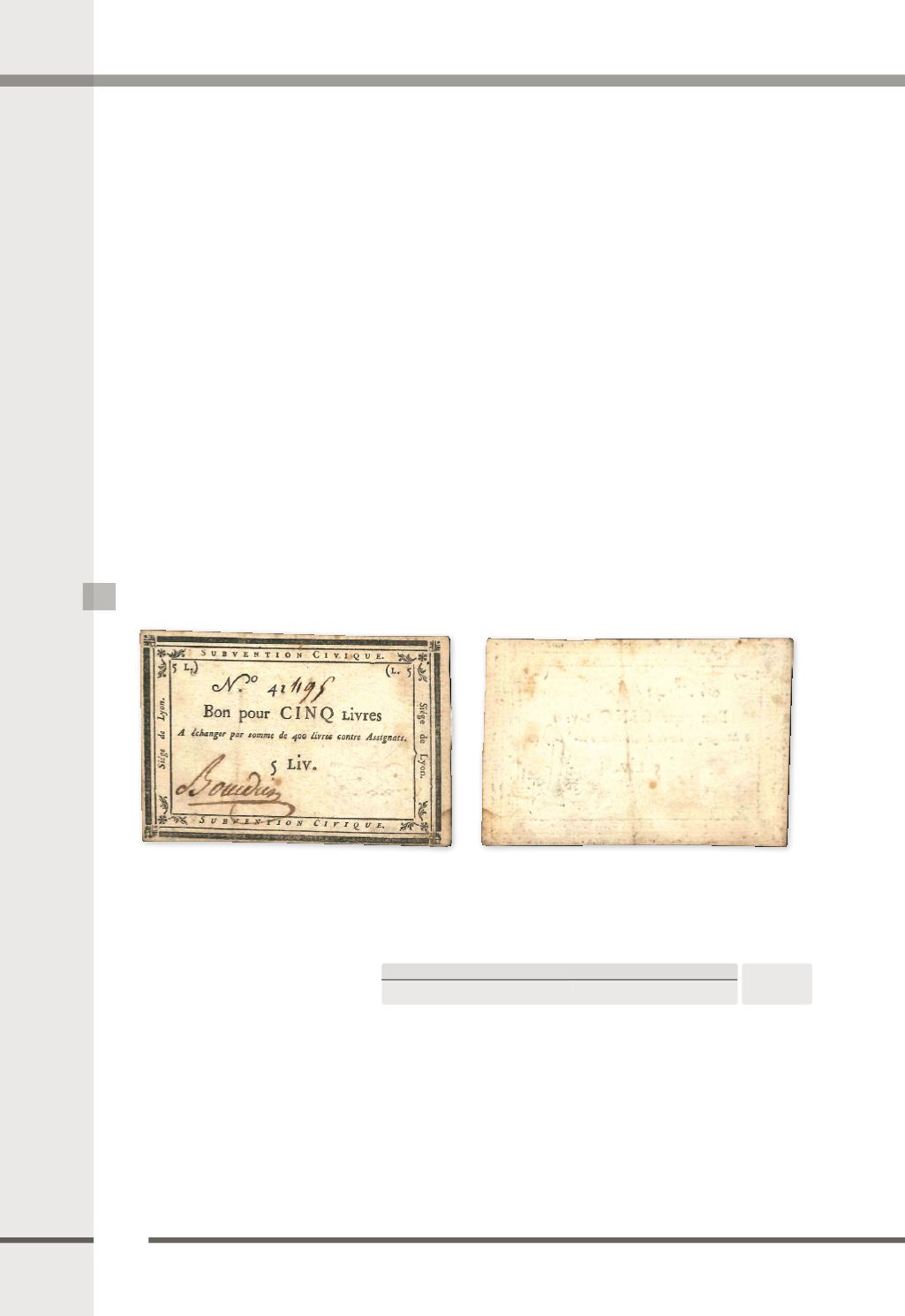

110
1793 SIÈGE DE LYON
Début 1793, bien qu’ils soutiennent la Révolution, les Lyonnais refusent certaines décisions de la
Convention. L’économie locale est au plus bas ; les émeutes, la disette et les querelles de pouvoir
alimentent les mécontentements. Les royalistes profitent du désordre pour constituer une armée.
Le 9 août, la ville est assiégé par l’Armée des Alpes. Le siège dure deux mois. Il s’achève par la
reddition dans le sang le 9 octobre 1793.
Durant cette période, des billets spécifiques circulent : fin août un 5 Livres et un 20 Livres de la Sub-
vention Civique, puis mi-septembre un 25 Sous et un 50 Sous, et enfin des bons municipaux, billets
de sections et autres.
1793 Siege of Lyon
In early 1793, even though they supported the French Revolution, the people of Lyon refused some of
the National Convention’s decisions. The local economy was at an all-time low; riots, a food shortage
and power struggles fueled discontent. Royalists took advantage of the unrest by putting an army
together. On August 9, the city was besieged by the Army of the Alps. The siege lasted two months en-
ding in bloodshed and the city surrendering on October 9, 1793. During this period, specific banknotes
were in circulation - a 5-Livre note the end of August and a 20-Livre note by the Subvention Civique
(civic grant), then a 25-Sous note and a 50-Sous note in mid-September, and finally “bons municipaux”
(municipal vouchers), “billets de sections” (faction notes) and other notes.
5 LIVRES
86 mm x 58 mm
4080102
Kol.134a
PS.303 Laf.253
28 août 1793
Siège de Lyon, Subvention Civique
Sign.Bourdier, n°42 (imprimé) 495 (manuscrit).
140
�����������������
200
TTB+
VF+
État
Grade
Départ
Estimation


















